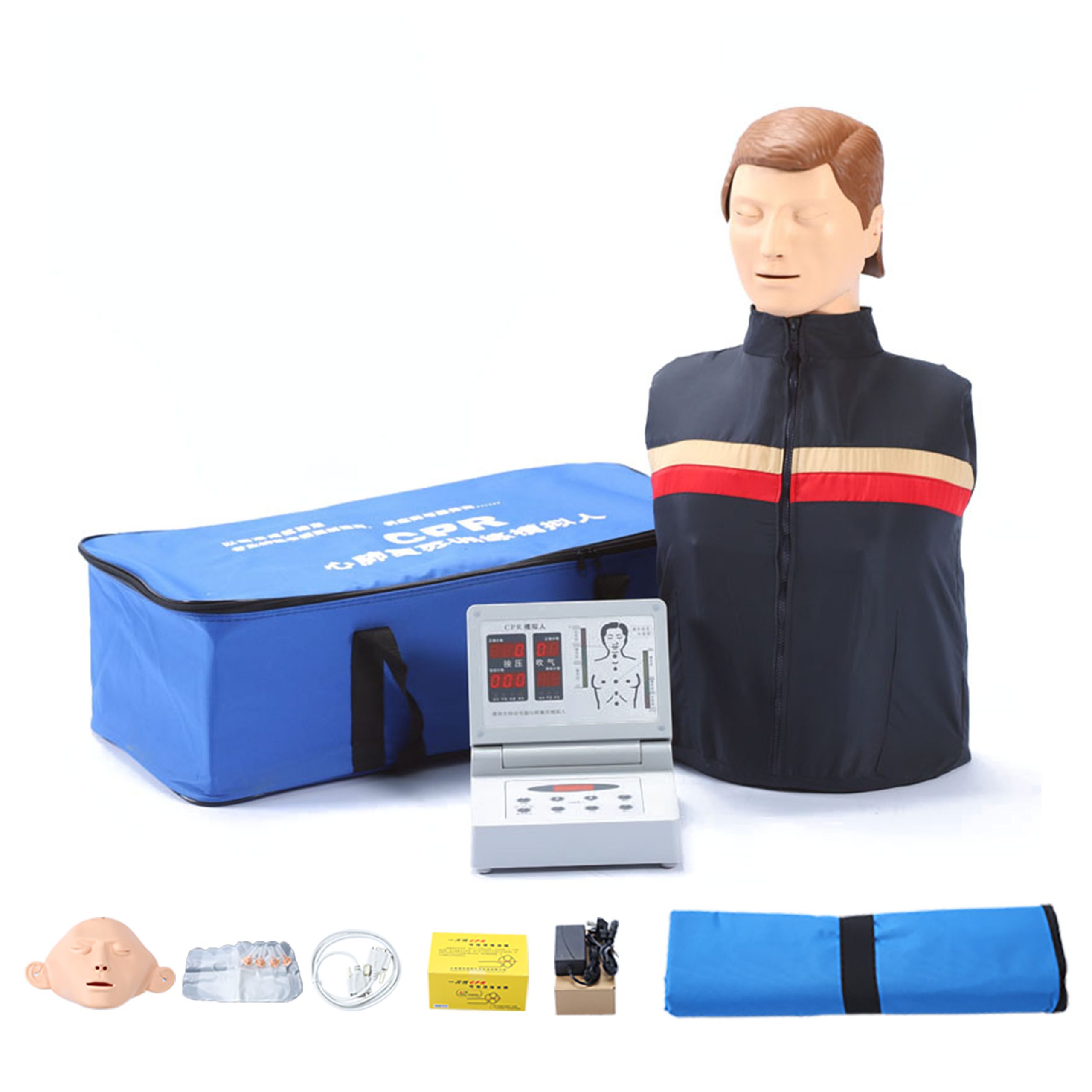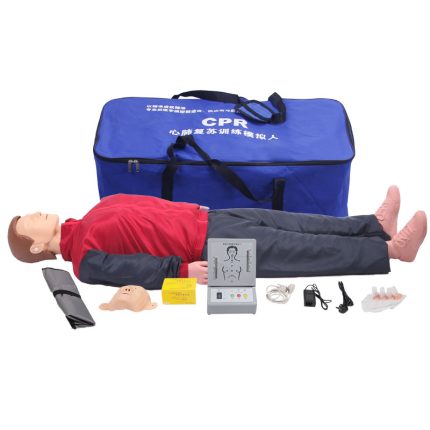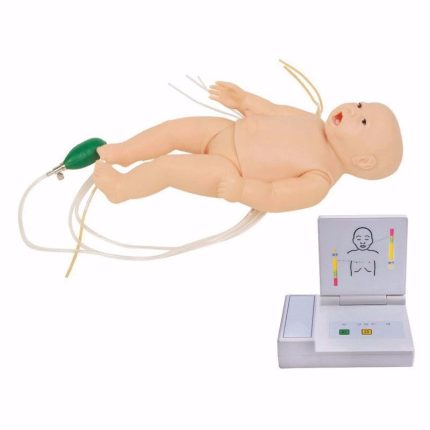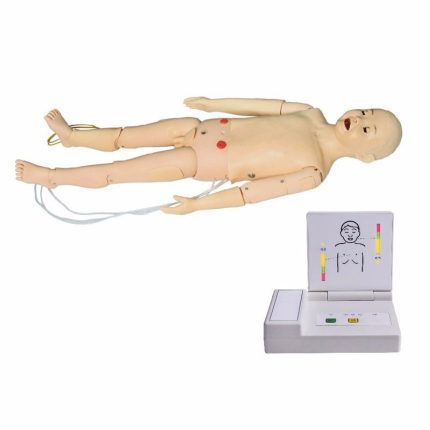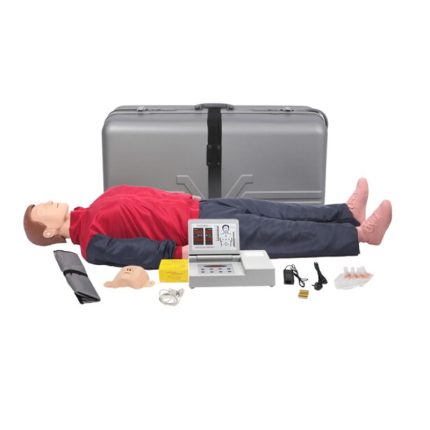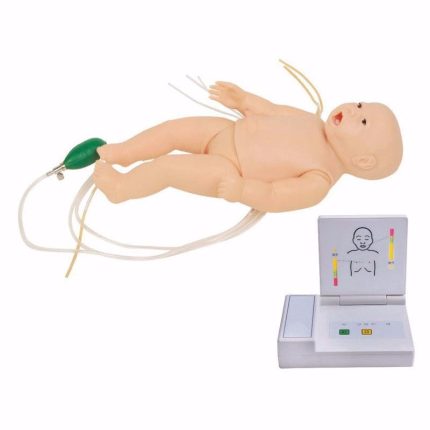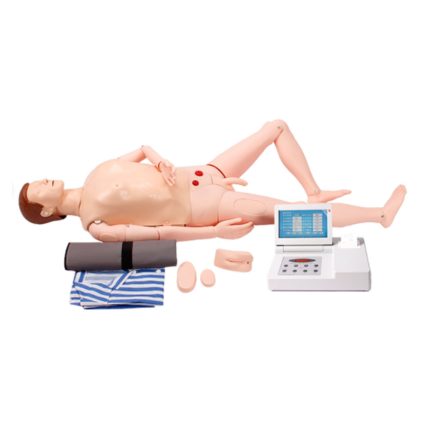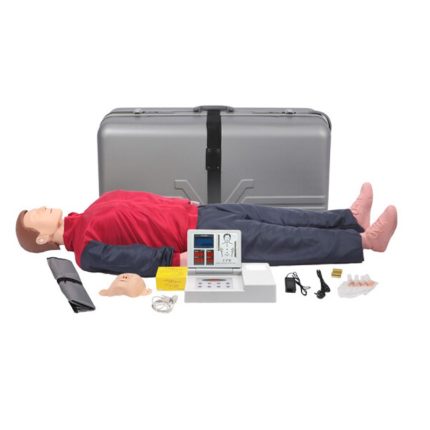Executive Standard: American Heart Association (AHA) 2020 Guidelines for International Cardiopulmonary Resuscitation (CPR)&Cardiovascular First Aid (ECC)
Features:
■ The simulated human has obvious anatomical features, real hand feel, uniform skin color, realistic shape and beautiful appearance.
■ Simulate vital signs:
• In the initial state, the simulated human’s liquid crystal pupil is dilated and the carotid artery is not pulsating.
• In the process of pressing, the passive pulsation of human carotid artery is simulated, and the pulsation frequency is consistent with the pressing frequency.
• After successful rescue, the simulated human LCD pupil returned to normal and the carotid artery pulsated autonomously.
• LCD pupil zooming and carotid artery pulsation can be turned on and off by switches.
■ Artificial respiration and external cardiac compression can be performed. The standard airway can be opened and the airway indicator lights up.
■ Two operation modes: CPR training and mode assessment can be conducted.
• Method 1: CPR training, including compression and air blowing.
• Mode 2: mode assessment. According to the 2020 international cardiopulmonary resuscitation standard, the ratio of correct compression and air blowing is 30:2, and five cycles are completed within the set time.
Controller Display Function:
■ Electronic monitoring: the electronic indicator shows the monitored airway opening and pressing position. Correct count and wrong count of artificial respiration and chest compressions.
■ Voice prompt: Chinese voice prompt throughout the training and assessment. Voice can be turned on and off and volume can be adjusted.
■ The bar code shows the blowing volume: the correct blowing volume is 500 ~ 600ml-1000ml:
• When the air blowing volume is too small, the barcode is yellow.
• When the blowing volume is appropriate, the barcode is green.
• When the blowing volume is too large, the barcode is red.
• The amount of moisture blown in is too fast or too large, resulting in gas entering the stomach indicator; Digital counting display; Error language prompt;
■ The bar code shows the pressing depth, and the correct pressing depth is 5-6cm:
• When the pressing depth is too little, the barcode is yellow.
• When the pressing depth is appropriate, the barcode is green.
• When the pressing depth is too large, the barcode is red.
■ The operation accuracy can be set by yourself.
■You can set the operation time in seconds by yourself.
■ Operating frequency: 2020 standard is at least 100 times / min, and the value can be set by yourself.
■ Power supply status: 220V power supply is used, and 12V power is output after being stabilized by a voltage regulator. (optional lithium battery, suitable for direct use without external power supply.)
RF remote control function (optional):
■ RF remote controller, the teacher can set the operation process through the remote controller. Control CPR start, stop, mute, pupil change, pulse, printer and other functions. It can also record consciousness judgment, first-aid call, pulse check, breath check and foreign body removal.
Material Characteristics:
■The facial skin, neck skin, chest skin and hair are made of imported thermoplastic elastomer mixed glue materials, which are made of stainless steel molds and high-temperature injection molding by injection molding machines. They have the characteristics of accurate anatomical marks, real hand feel, uniform skin color, realistic shape, beautiful appearance, durability, no deformation after disinfection and cleaning, and convenient disassembly and replacement. The materials have reached the same level abroad.
Standard Set Configuration:
■ One advanced recovery half body manikin;
■ One advanced display controller;
■ One luxury super thick Oxford bag;
■ One resuscitation operation pad;
■ One power adapter;
■ One data line;
■ One box of barrier facial mask (50 sheets / box);
■ Four sets of exchangeable lung sac devices;
■ One exchangeable mask;
■ One operation manual.

